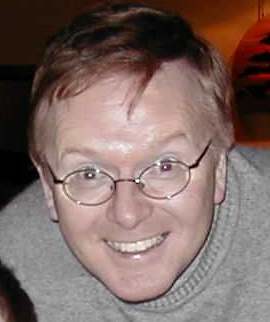We have all seen the classic “I’ve fallen and I can’t get up!” commercials. This caricature, although humorous, is representative of an important class of technology that provides monitoring of health and well-being status, communication to interested parties, and in some cases provides automated responses to perform some corrective action. Few people would choose to have a caregiver following their movements twenty-four hours a day, seven days a week to ensure their well being. Studies show that providing this level of monitoring through technology is more acceptable and provides a high level of support for independent seniors. With a professionally developed program the caregiver can better the ongoing day to day maintenance required and also life’s little emergencies.
These monitor and response systems can operate in the short term to sense a crisis situation, such as a fall, and provide a way to make a call for help. Medical alert systems like American Medical Alarms, Inc. all allow a greater degree of freedom for an older person, and peace of mind for adult children, by allowing independence while providing a safety net in case of medical crisis. Some devices might automatically detect a crisis (such as a fall). Others depend on activation by the individual (or someone nearby) to initiate a call for help.
Monitoring systems can be classified along a number of dimensions:
- What information is being recorded or transmitted? It could be medical information (e.g., heart rate, respiration, blood pressure, medication compliance, incontinence), movement data (e.g., restlessness in bed, gait patterns), or simply awareness information (e.g., a video transmission to a relative).
- Over what period of time are data analyzed? The capture of information can be for instantaneous purposes only (e.g., a “GrannyCam” usually transmits images over the Internet to be viewed in real time only) or over a period of time for trend analysis, as you would expect for vital signs in a telemedicine application or in medication monitoring for compliance in a home or assisted living environment.
- How is information reported to relevant individuals? Medical alert systems provide a phone call to a response agency. Telemedicine applications report over a secure channel to an electronic patient record that can be consulted by trusted medical professionals or even by the individual being monitored. Cameras are sued to provide easy monitoring for family (usually over the Internet, serving an important social communication function discussed below) or remote caregivers (at a nursing station, for example).
- What is the role of the older person in using the technology? Does the monitoring require any instrumentation or active cooperation on the part of the individual being monitored? For example, do they have to wear an infrared badge for a positioning system, or is it passive, with the environment instrumented to measure a naturally occurring phenomenon using devices such as a motion detector or face recognition system?
There are many examples of these monitoring systems for an aging population. Some address the safety and security of individuals who may wander. Devices can either prevent undesired wandering (e.g., automatically closing doors or gates to a house or community grounds to protect Alzheimer’s patients) or remind other to take corrective action (e.g., at nighttime when someone inappropriately leaves the bed). Simple load sensors in the beds of residents at Elite Care’s Oatfield Estates Cluster in
Some research is focused on monitoring ADL tasks in the home using a variety of sensing technologies and this is the part we’re interested in. Sensors and switches attached to various objects, or optical and audio sensors embedded in the environment, are used to detect which task a person is performing. Research trials with several subjects indicate that this method of tracking a person’s actions is a good way to monitor the state of a person’s health and independence and several commercial products are available for this purpose. Two companies, Quietcare (http://www.quietcare.com/) in partnership with ADT, and Xanboo in partnership with AT&T (http://www.attrm.com/) deliver home monitoring capability. The Quietcare product is best described in the attached first comment and is a significant and thoughtful step in home based senior monitoring. It is critical to have the infrastructure to support installations for effective home monitoring of seniors. People and homes are complex and individual and the configuration requirements for each installation cannot be managed with a canned security approach. The Quietcare product is focused on homebound elderly and other at-risk clients with chronic medical conditions, on monitoring in assisted care facilities and the AT&T product on home monitoring while the senior is in their summer or winter residence.
Friedman (1993) developed a wearable microcomputer with a location-sensing system and additional sensors to determine task-related information. Recently a commercial product is available from Bodymedia which shows some benefit of a wearable unit but primarily to support an exercise regime. Still, this is worth considering if you need to lose weight although I hate the idea of wearing an armband continually personally.



2 comments:
Steve -
Thanks for your insightful and accurate coverage of QuietCare. FYI - Through ADT we provide expert installations in client homes nationwide within 48 hours. In fact, we do NOT permit self install, the placement of sensors is very important to our accurate detection and assesment of morning wakeup, safe bathroom navigation, meds handling, meal preparation, sleep quality and night bathroom usage. Our ADL measurement provides early detection and early warning of potentially significant health problems. Though we do NOT measure physiologic vital signs, QuietCare requires NO action on the part of the senior so anyone can use it. Thanks again. George Boyajian, CoFounder, EVP R&D LIG, Inc, the makers of QuietCare.
Seems I was originally and inadvertently a little harsh on Quietcare so I have edited the original post accordingly.
Steve
Post a Comment